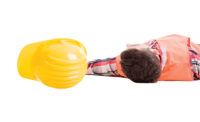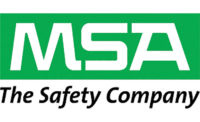Falls are the leading cause of fatalities in construction, accounting for about one-third of all fatalities in the industry. There were 291 fatal falls to a lower level in construction in 2013, out of 828 total fatalities, according to the Bureau of Labor Statistics.
Subpart M lays out the requirements and criteria for fall protection in construction workplaces. The provisions of Subpart M can be found in Title 29 Code of Federal Regulations (CFR) Subpart M - Fall Protection, 29 CFR 1926.500, 29 CFR 1926.501, 29 CFR 1926.502, and 29 CFR 1926.503.
Below are examples of fall protection requirements for certain construction activities:
Leading Edges – 29 CFR 1926.501(b)(2)
Each worker constructing a leading edge 6 feet or more above a lower level must be protected by guardrail systems, safety net systems or personal fall arrest systems. 29 CFR 1926.501(b)(2)(i).
Workers must be protected by guardrail systems, safety net systems or personal fall arrest systems, even if they are not engaged in leading edge work, if they are on a walking or working surface that is 6 feet or more above a level where leading edges are under construction. 29 CFR 1926.501(b)(2)(ii).
Roofing Work on Low-Slope Roofs – 29 CFR 1926.501(b)(10)
A low-slope roof has a slope less than or equal to 4 in 12 (vertical to horizontal). When engaged in roofing work on a low-slope roof that has one or more unprotected side or edge 6 feet or more above lower levels, workers must be protected from falling by:
- Guardrail systems,
- Safety net systems,
- Personal fall arrest systems,
- A combination of conventional fall protection systems and warning line systems, or
- A warning line system and a safety monitoring system.
When engaged in roofing work on low-slope roofs 50 feet or less in width, the use of a safety monitoring system without a warning line system is permitted.
Working on Steep Roofs – 29 CFR 1926.501(b)(11)
A steep roof has a slope greater than 4 in 12 (vertical to horizontal). When working on a steep roof that has one or more unprotected side or edge 6 feet or more above lower levels, each worker must be protected by:
- Guardrail systems with toeboards,
- Safety net systems, or
- Personal fall arrest systems.
Residential Construction – 29 CFR 1926.501(b)(13)
Workers engaged in residential construction 6 feet or more above lower levels must be protected by conventional fall protection (i.e., guardrail systems, safety net systems or personal fall arrest systems) unless another provision in 29 CFR 1926.501(b) provides for an alternative fall protection measure.
Exception: When the employer can demonstrate that it is infeasible or creates a greater hazard to use these systems, the employer must develop and implement a site-specific fall protection plan that meets the requirements of 29 CFR 1926.502(k). See the section on Fall Protection Plans, below.
Note: For purposes of determining the applicability of section 1926.501(b)(13), the term “residential construction” is interpreted as covering construction work that satisfies the following two elements: (1) the end-use of the structure being built must be as a home, i.e., a dwelling; and (2) the structure being built must be constructed using traditional wood frame construction materials and methods. For more information, see OSHA’s Compliance Guidance for Residential Construction, STD 03-11-002.




